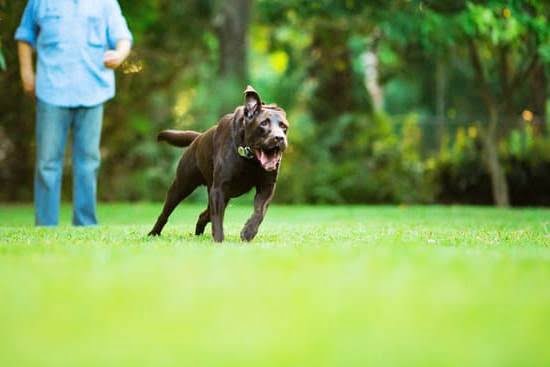Introduction
Training a service dog for panic attacks is an essential part of ensuring the safety and wellbeing of those who suffer from mental health issues. Service dogs provide emotional support, companionship, and physical assistance that can help mitigate any symptoms related to their handler’s anxiety or phobia. A trained service dog is able to aid those with panic attacks in various ways; they are trained to recognize signs of an attack coming on, such as elevated heart rate and fear-related body language. From this initial awareness, the service dog can be trained to perform different tasks that help ease the effects of the panic attack. These tasks may include providing gentle pressure (e.g., leaning against the handler during a moment of distress) leading the handler out of a crowd or busy environment if it is deemed that staying in that location could exacerbate existing symptoms; initiating calming behaviors like deep breathing exercises; retrieving items such as water or medication; distracting their handler by nudging them with their snout or performing a learned task like retrieving a favorite toy.
Ultimately, having a well-trained service dog gives those suffering from severe anxiety or phobia issues peace of mind by knowing that their four-legged companion is dedicated to helping them through tough times and providing constant support along the way. Additionally, training a service dog to assist during times of panic can provide feelings of empowerment for those who might otherwise feel completely overwhelmed by their experiences. By training your furry friend, both you and your pup will learn valuable skills necessary for addressing difficult mental health issues in respectful and constructive ways – together as one team!
Planning and Research
When researching which service dog is best for your needs, it is important to consider how the dog’s size, breed, and temperament would fit into your lifestyle. For example, a large breed may be better suited for providing physical comfort and protection, while a small breed might provide a calming presence during panic attacks. Also, consider whether the dog would be suitable in a public setting and if they will have enough energy to accommodate your everyday activities. Researching what tasks are required of service dogs that assist with panic attacks is also important; tasks may include providing physical contact such as leaning against you or pawing you when feeling an attack coming on, alerting caretakers or medical professionals when sensing an attack, distracting by barking or playing behaviorally cued activities such as fetch during a panic attack, and using deep pressure therapy to help calm down the person during an attack. Once you have researched these topics thoroughly, you will be able to make an educated decision when selecting a service dog for panic attacks.
Choosing a Trainer
When considering a trainer for service dog training, it is important to select someone who has experience and expertise in working with service dogs, as well as knowledge of the particular training tasks needed to prepare a service dog for providing assistance with panic attacks. A reputable trainer should have experience in teaching obedience skills as well as public access protocols, which are essential for successful service dog integration. It is wise to research potential trainers’ experience by asking for references from clients, reading reviews or even talking directly to current and former clients that may have worked with the same individual. Additionally, some trainers may be certified by a relevant organization such as an Assistance Dog International (ADI) accredited program. This certification is considered evidence of their proficiency in training service dogs and indicates that they adhere to certain standards evidenced by the completed coursework and exams.
Establishing a Training Routine
The first step for training your service dog to help with panic attacks is establishing a training routine. This includes setting a consistent schedule of when you will practice certain commands and behaviors with the dog over time. When creating a training plan, it is important to consider which commands you want the dog to learn, how often you will be reinforcing those behaviors, and what type of rewards you will use when the dog performs correctly. It may also be helpful to identify possible triggers or situations that could cause distress in the dog, so they can be avoided while in training. Establishing boundaries like not rewarding bad behavior will also help ensure your training is successful. Set achievable goals that can be worked on incrementally so both the dog and handler can celebrate successes along the way.
Practical Training
Training a service dog for panic attacks begins with teaching basic obedience tasks and commands. This should include actions such as “sit”, “stay”, “down”, and “come.” To get the most out of the training process it is important to use appropriate and effective training techniques. For example, positive reinforcement strategies are often recommended. This can include giving a treat or verbal praise when the dog performs the desired behavior. It is important to remember that praise and rewards should only be given after the task has been completed successfully. Additionally, physical contact (e.g., petting) may also be used to positively reinforce behaviors.
Other aspects of practical training will include teaching the service dog how to respond in situations where their owner may experience a panic attack. Tasks such as blocking (using their body to physically limit movement), disturbed ground (distracting their handlers by barking/whining), and deep pressure therapy (applying steady pressure on areas of their handler’s body), should be taught separately but in similar contexts so they can be applied during moments of distress. Timing is critical when teaching these tasks so it is important take your time and practice them frequently until your dog has mastered the desired behaviors. The final step in training should always focus on socialization; exposing your dog to people and other animals outside of trusted benchmarks will help them become more confident in public settings.
Monitoring Progress
Monitoring your dog’s progress is essential in ensuring that you are taking the necessary steps to properly train them to respond during an emergency. Pay attention to their behavior and responses when you practice with different triggers, such as loud noises or a crowd gathering, so you can gauge how they will react in different types of situations involving panic attacks. Additionally, pay attention to any cues they display that show they are becoming anxious – these might include panting and whining, pawing at you or restlessness. Through observing their reactions and gauging their response times and accuracy, you will be able to determine whether or not your service dog is ready and has been effectively trained.
If it becomes apparent that your dog needs additional training in order to become prepared for a panic attack situation, then it is essential that this is addressed so further adherence to the proper protocol can occur. Seek out the assistance of a qualified animal behavior specialist or trainer if needed so that any potential issues can be isolated and addressed accordingly. Progression markers should also be established so that both you and your trainer can track their progress on a continual basis – this way expectations are met over time and any further adjustments needed can be made quickly and easily.
Reaching Out to Professionals
When training your service dog for panic attacks, it’s important to reach out to experienced handlers or behavior professionals throughout the process. They can be valuable resources for guidance on how best to meet the particular needs of your service dog. Many programs are available to test and certify an animal’s abilities as a service animal after the handler has trained it in basic obedience and proper service dog behaviors. Not all tasks involved with training a service dog are practical for a novice owner, so seeking professional assistance can ensure optimal results.
It is also advisable to consult with medical professionals when working with a service dog intended to assist with anxiety or panic attacks. A certified professional counselor or psychologist can help identify which situation may cause an attack and then provide appropriate solutions that might involve identifying triggers, installing calming techniques and guiding the owner through recognizing signs of an oncoming panic episode. Doing so ensures that both the owner and their pet understand each other’s needs before attempting to work together in combating the problem. Additionally, having access to mental health professionals provides another source of support for a handler embarking on this life-changing journey.
Training in Real Situations
One of the most important parts of training a service dog to help with panic attacks is preparing them to handle situations in a real-world setting. To do this, you need to start gradually exposing your service animal to various triggers that could cause a panic attack in different environments. This could involve allowing them to hear loud noises at varying distances or teaching them how to recognize body language associated with an impending episode. Additionally, start taking them out into public spaces with you while helping them become comfortable dealing with unpredictable occurrences. This can include exposure to crowds or busy urban spaces where they will come into contact with several people and scenarios that could trigger an attack. Teaching your dog simple commands that can be used as soon as symptoms appear and making sure they are familiar with these orders is also important for preparing them for handling panic attacks in real-life situations.
Training Tips and Tricks
Training a service dog for panic attacks requires sensitivity, patience and dedication. To prepare your service dog to help those in need of psychological support during a panic attack, the first step is to identify the signs that the individual experiences when they are going through an episode. This will enable you to teach your pup the appropriate response commands in order to assist them.
Next, familiarize yourself with basic obedience training. This should include commands such as sit and stay, come when called and heel, just to name a few. Once you’ve mastered these basics, start introducing specific tasks related to panic attacks that are meant to de-escalate the situation such as deep pressure therapy (DPT). This can be done by teaching your pup learned behaviors such as pawing gently on the person’s chest or shoulders or applying counter-pressure on their back with its body weight. During DPT it is important to speak calmly and reassuringly for this helps lower one’s heart rate and blood pressure and relaxes tense muscles.
When administering medication during an episode of panic attack also develop a task cue specifically for this like “give medicine” so that your pup knows what is expected of them during particular times while out in public. Reward correct behavior each time you practice your training routine–positive reinforcement is key! Additionally, build resilience in your pup by teaching him/her distractions techniques like nose work which helps them stay focused on a task even if their environment becomes overwhelming or filled with stimuli. Lastly, continue regularly attending obedience classes with other trained service dogs-this will help reinforce commands while providing much needed socialization opportunities!
Conclusion
Training a service dog for panic attacks is an important process that requires patience and consistency. Start by introducing your dog to basic obedience commands, choosing appropriate behavior modification techniques, and establishing a reliable alert system to help prepare them for future assistance with panic attacks. Additionally, develop a specific reinforcement plan in order to reward the desired behaviors of your service dog. As the training progresses, be sure to provide plenty of encouragement and positive reinforcement for learning new tasks.
Once your service dog is properly trained, they will be able to provide invaluable emotional support during times of distress or panic attacks. The interaction that occurs between service dogs and their owners can directly reduce anxiety levels which can lead to improved physical health outcomes. Also, having access to an emotionally supportive pup can help increase happiness and foster human-animal bond that create long-lasting positive impacts in life.
In conclusion, training a service dog for panic attacks requires patience and consistency but yields immense rewards! Following these steps can give someone suffering with anxiety or panic disorder a sense of security in knowing their faithful companion is there when needed most!

Welcome to the blog! I am a professional dog trainer and have been working with dogs for many years. In this blog, I will be discussing various topics related to dog training, including tips, tricks, and advice. I hope you find this information helpful and informative. Thanks for reading!





